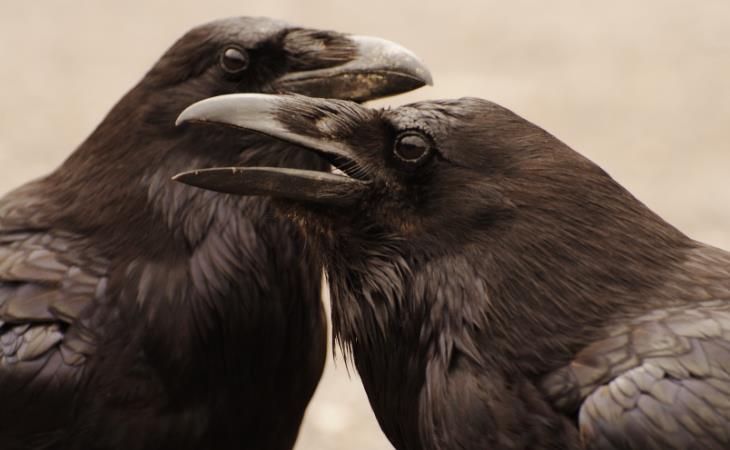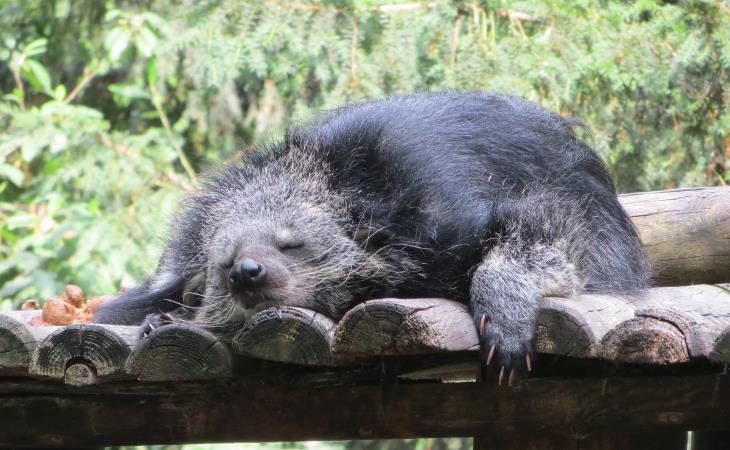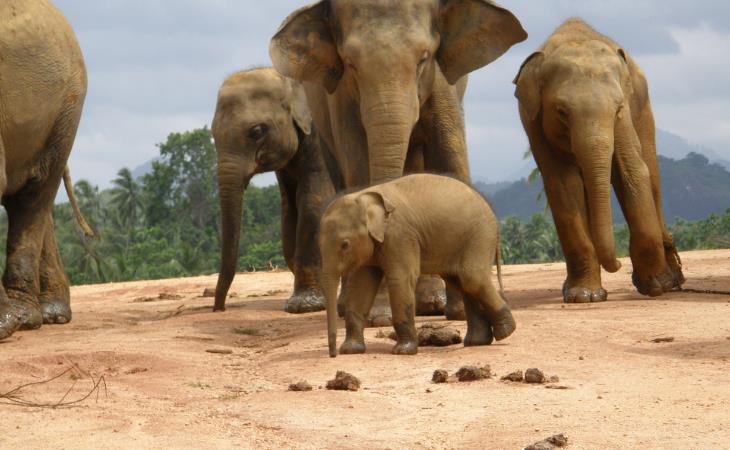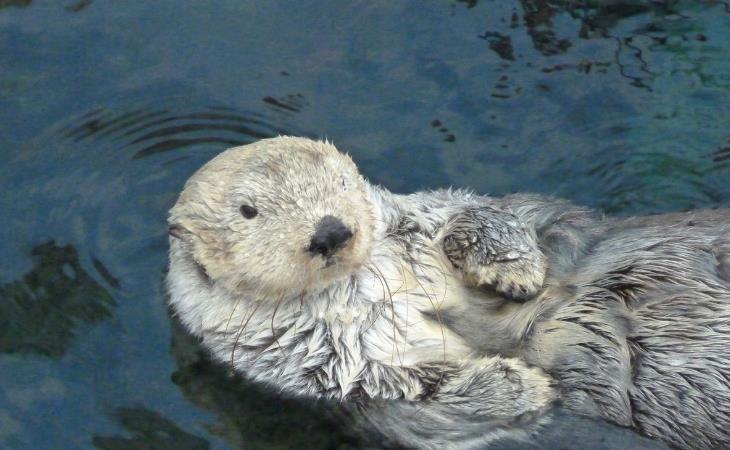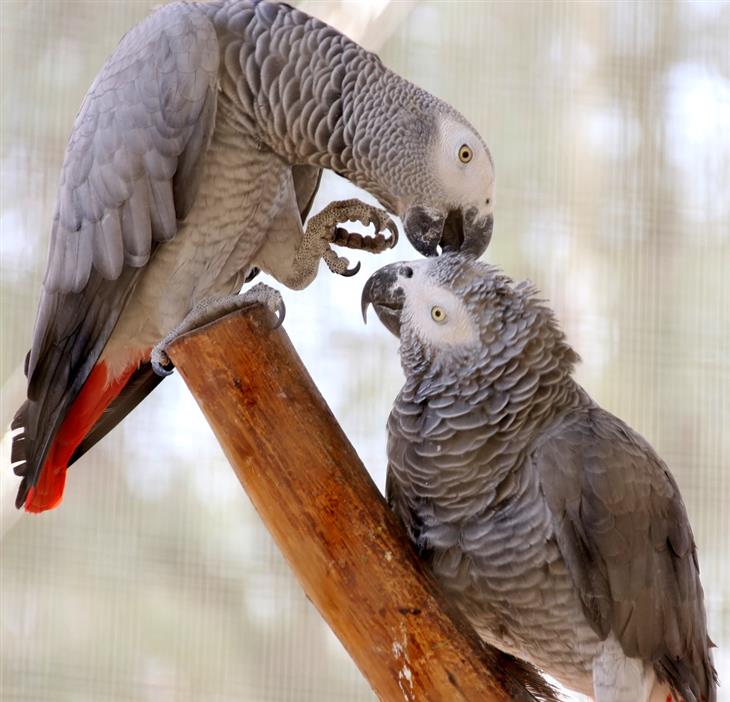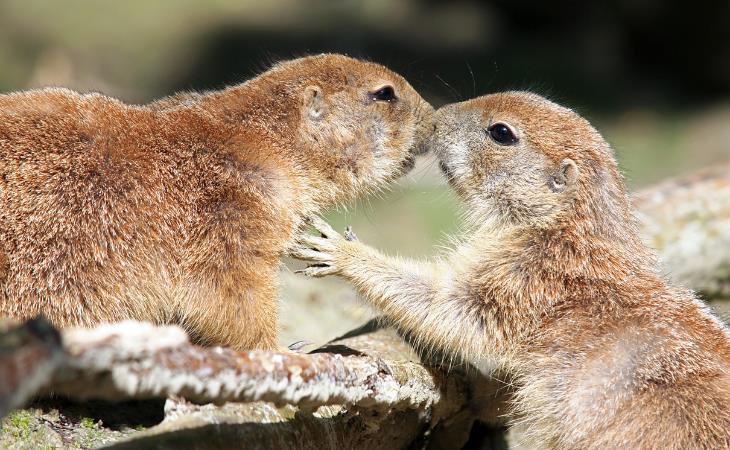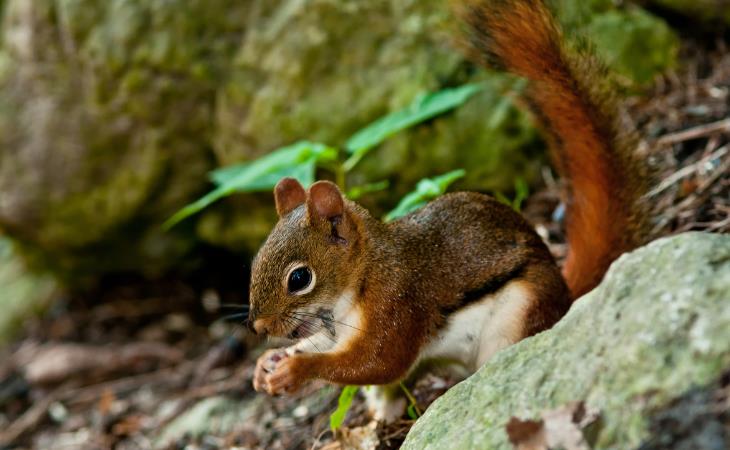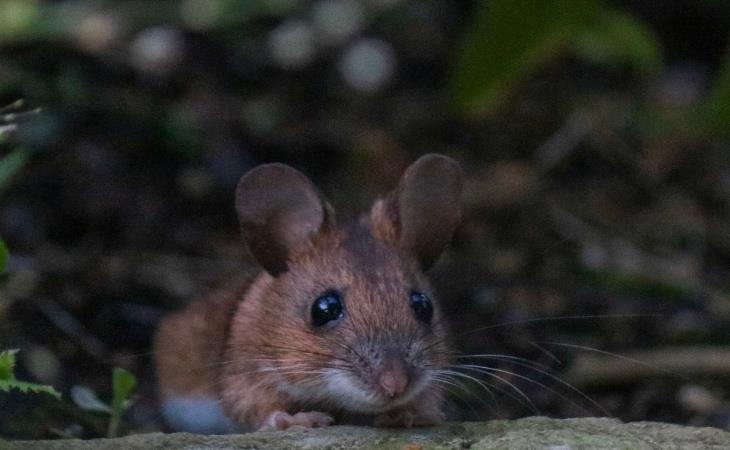Crows aren’t just one of the cleverest members of the avian world; they are also pranksters! Yes, that’s right. Nature writer Candace Savage has observed that crows are so intelligent that they often play pranks on each other. They have been seen mimicking human voices and other sounds and enjoying the confusion it causes. Swiss Zoologist Thomas Bugnyar conducted research that showed that crows sometimes deceive other birds by looking for food in empty food containers and then sneaking away to raid full containers.
2. A bearcat smells like buttered popcorn
The binturong, also known as the bearcat, is not related to bears OR cats. They are a shy member of the civet family found in the rainforests of Southeast Asia. But that’s not the only interesting part about these animals. You see, bearcats smell like buttered popcorn! Why? They owe their aroma to their urine, which contains a compound called “2-AP.” The same molecule is produced by popcorn kernels once they pop. When a binturong pees, the animal's feet and tail get soaked. It then drags its pee-soaked tail over trees, leaving a trail of buttered-popcorn smell.
3. When a baby elephant is born, other mothers in the social group will trumpet to celebrate its arrival
Elephants are more like humans than you think. For starters, they are susceptible and caring animals and have a terrific memory. Furthermore, the birth of a baby elephant is widely celebrated by the herd. When a newborn arrives, the females in the herd trumpet to celebrate or announce the birth. Adult male elephants often leave the group to go mate or partner up with other solitary males. The females of the group stick around, particularly for new births.
4. Otters have a pocket in their skin
Here’s a little-known fact we bet you didn’t know about sea otters: they have a secret place on their bodies where they can stash things. The adorable animals have baggy “pockets” of loose skin under each forearm where they can securely place small items like food, allowing their paws to be freed for other things. Sometimes, they also use the pockets to store rocks, which they use for cracking open mollusks and clams.
5. Parrots will selflessly help each other out
Researchers have recently found that parrots will selflessly help other members of their species, even strangers. According to a 2020 study published in Current Biology, these colorful birds will "voluntarily help each other obtain food rewards" and perform "selfless" acts.
Study co-author Auguste von Bayern noted that African grey parrots were intrinsically motivated to help others, even if that individual was a stranger or not their friend. The authors stress that the parrots they studied behaved very “prosocially.” Scientists say that African grey parrots are the first non-mammals observed helping each other in this way.
6. Prairie dogs “kiss”
Prairie dogs are herbivorous ground squirrels that live in interconnected burrows. These quirky rabbit-size rodents greet other members of their species with what looks like a kiss. However, what they’re actually doing is touching their front teeth.
Prairie dogs are social animals and extremely territorial. The kissing behavior is their unique way of recognizing each other and ensuring they’re part of the same family. Furthermore, baby prairie dogs “kiss” their mother for comfort to know she is nearby. Isn’t that adorable?!
7. Harvest mice often fall asleep inside flowers
Okay, this fact will straight-up melt your heart. Apparently, harvest mice love pollen so much that they often fall asleep inside flowers eating it. Although tulips can look fragile, they are strong enough to support these adorable little creatures when they’re feeling sleepy. Harvest mice are enamored by the smell of pollen and scurry up the stems to climb inside flowers and eat the pollen. Who can blame them for taking a nap after a yummy snack on such a comfortable “bed”?
8. Squirrels will adopt other squirrels' babies if they are abandoned
Squirrels have a tender side not many know about – they will adopt another squirrel's baby if its parents die or are unable to care for it. Scientists from the University of Alberta observed that, in rare cases, red squirrels adopt pups that have lost their mother. However, they add that adoption occurs only among close kin, while unrelated orphans are never adopted. Adoptive behavior among mammals that live on their own, such as squirrels, is uncommon. The situation is rare but does happen, the researchers noted.
Exactly how the squirrel mothers determine whether the orphaned babies are close relatives is unknown. Some researchers theorize that if a mother squirrel recognizes the vocalizations of an orphaned baby from nearby trees, she carries it to her nest.
9. Goats have 'accents'
Much like humans, goats have the ability to adopt a new “accent” if they mingle with other goats for a while. Researchers from Queen Mary University in London found that goats develop their own speaking voice when they move away from their siblings and hang out in different groups.
The researchers observed four groups of pygmy goats, all siblings or half-siblings. The animals were first monitored when they were one week old – a time when baby goats stay in sibling groups, hidden from predators. Then, the goats were observed again at five weeks old when they form larger social groups with other animals.
“We found that genetically related kids produced similar calls, which is not that surprising,” Dr. Elodie Briefer, who led the study was quoted as saying. But the calls of kids raised in the same social groups were also similar to each other and became more similar as the kids grew older, they add. This suggests that goat kids adapt their calls according to their social surroundings, developing similar ‘accents’.
10. Male mice sing to woo mates
Yes, mice are romantic little creatures. According to a paper in the journal Physiology & Behavior by scientists from Duke University, male mice croon songs to impress potential mates. These mice melodies are in the ultra-sonic range, and are, hence, not audible to humans. Using a special computer program, the researchers recorded the vocalizations made by male mice while they hung out with a female mouse, or sniffed her urine. They found that when male mice sniffed female urine but couldn’t see her, their songs were loud and complex. However, when they were paired up with a live female, their songs were longer but simpler.
“When we pitch them down and play back at real speed, it sounds like a bird," Duke postdoctoral fellow Jonathan Chabout notes.
Share this post with all your loved ones!

